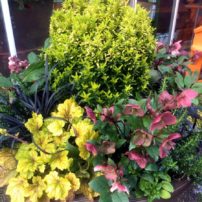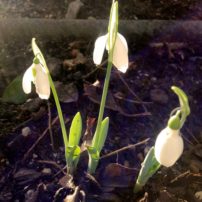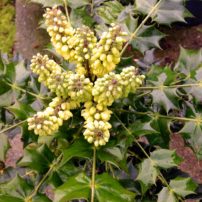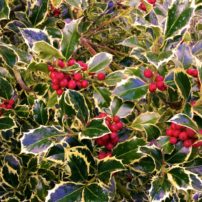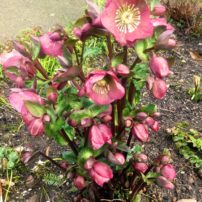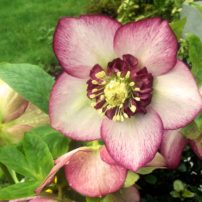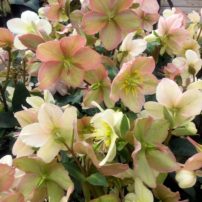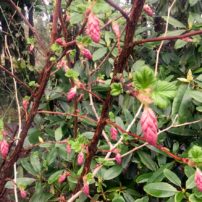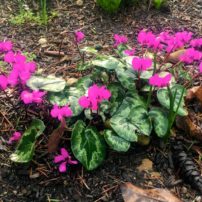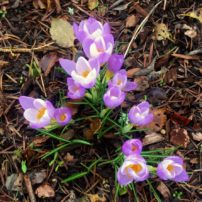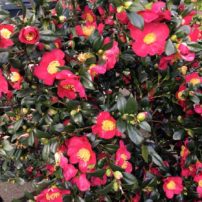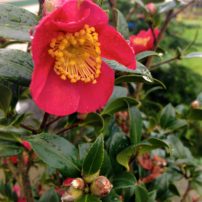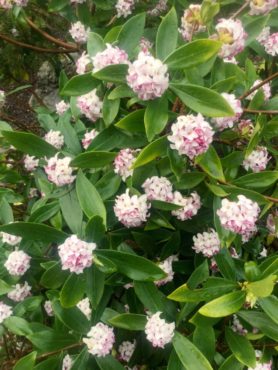
Color in the garden does not have to end when the skies turn gray and rainy. Some gardeners even like the challenge of having something blooming or showing color 12 months a year.
Here are three very reliable plants that can get you started on that goal.
Daphne
Sometimes called winter daphne, this evergreen plant is a slow grower that is native to China. It has pale-purple flowers and over many years, it can get 6 feet high.
Fragrance is the best reason to find a place in your landscape for daphne. It has handsome foliage when not in bloom and works well as a specimen plant. The variety Daphne odora ‘Alba,’ with its showy-white flowers, may also be found at the nursery.
Daphne thrives in moist, slightly acidic soil in a slightly shady location.
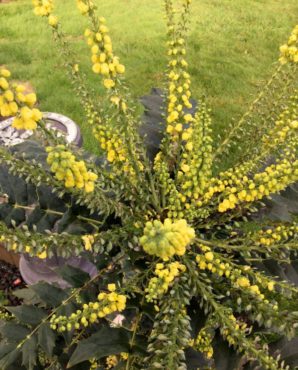
Mahonia
This plant is easy to identify with its bold, evergreen foliage. It belongs to the barberry family. With common names of Oregon grape and grape holly, it is often seen as a ground cover shrub used for bank stabilization, but is available in many forms for landscape use.
Mahonia media cultivars have an upright structure with long, spiny leaves and erect spikes of yellow flowers in late fall through February. Some varieties also provide subtle fall color. When you cut back after flowering, the plant will have a slow recovery.
Mahonia thrives in dry, semishade to full-sun conditions in containers or in the ground.
Camelia
These plants vary in hardiness but the readily available camellia ‘Yuletide’ will survive our climate in a large container or in the ground. This variety will grow to a moderate- to large-sized plant over several years.
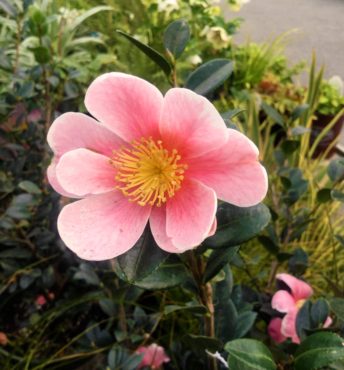
The single, brilliant-red flower is like a beacon in the garden. Camelias are evergreen plants that bloom but are not in active growth from October to February. As with azaleas and rhododendrons, camelias prefer an acid soil that is fast draining.
Plant these and other winter bloomers where they can be enjoyed from indoors or out. It is fun to cut a few blooms to bring inside and float on water.
USDA Zone 8b can support many other winter-flowering plants in all but the most severe of winters. Thanksgiving of 2009 was an example of severe cold weather (10 degrees several nights in a row) that arrived too soon after typical fall weather. Plant survival of cold weather is successful if the temperatures gradually decline, which they did not that year.
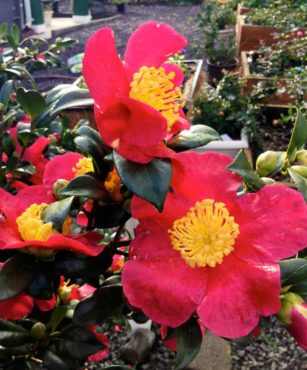
Local plant vendors can supply you with many other flowers, shrubs and bulbs to provide you with color for your winter garden.
- Colorful pansies — an annual that may bloom from September to May if deadheaded and fertilized in February and April and conditions are favorable
- Flowering kale — an annual usually seen during the harvest season then removed
- Witch hazel — a shrub
- Cyclamen — look for the perennial outdoor types, not houseplants
- Hellebores — perennial varieties continue to increase every year
- Galanthus (snowdrops) — small bulbs planted in fall that bloom in January
- Flowering currant — a shrub
- Dwarf shrubby heathers




